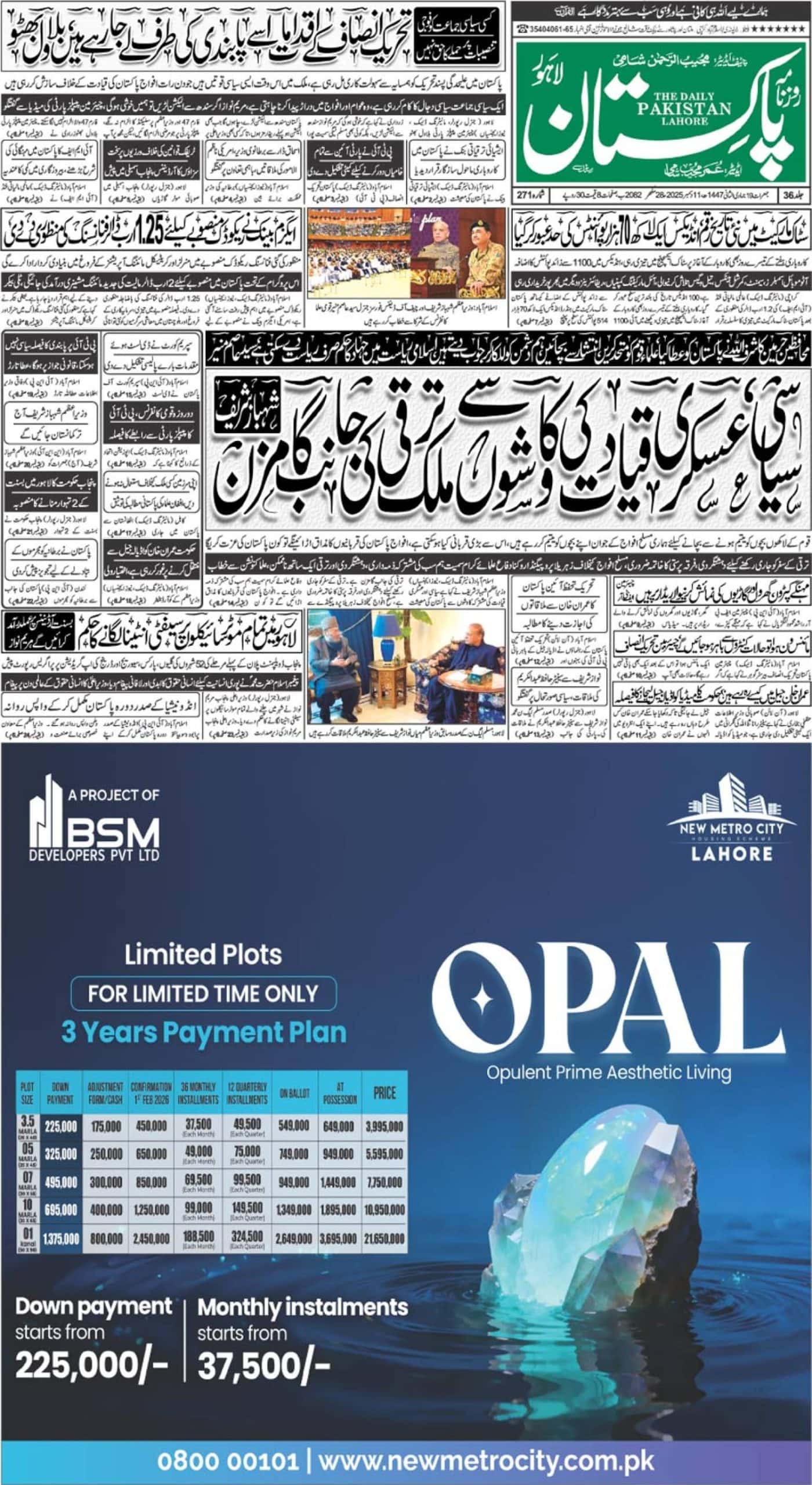This analysis is based on the final results of the 270 National Assembly constituencies that took part in the 2018 General Elections.
Some important definitions:
- Turnout: Turnout is the percentage of total polled votes out of total registered votes, higher is good, lower is bad
- Rejection: Rejection is the percentage of total rejected votes out of total polled votes, lower is good, higher is bad
- Poll %: Percentage of votes received to party or candidate out of total polled votes
- Seat %: Percentage of NA seats won out of total seats
- Margin: The difference between votes received by the 1st and 2nd candidates in a constituency. Margin is calculated at constituency level and then aggregated to arrive at party level, province level, city level and national level margin numbers
- Margin %: Margin as a percentage of candidate votes or (in the case of national level, province level and city level view, margin as a percentage of polled votes
Winning Margins vs Rejections by Province
| Province | Turnout % | Rejected vote % | Margin of victory % |
|---|---|---|---|
| Punjab | 56.60% | 2.70% | 10.50% |
| Sindh | 47.10% | 3.90% | 16.10% |
| Khyber Pakhtunkhwa | 42.80% | 3.20% | 13.70% |
| Balochistan | 43.10% | 5.60% | 9.30% |
| PAKISTAN | 51.70% | 3.10% | 12.00% |
Based on updated data, we see that the national average for turnout was 51.7% and 3.1% of all polled votes nationally were rejected. Furthermore, the national average of margin of victory was 12%. We can see that only Sindh and KPK had victory margins greater than the national average.
All constituencies where winning margins were less than rejected votes
| Constituency | Winning Party | 2nd Party | Rejected Votes | Winning Margin |
|---|---|---|---|---|
| NA-10 | Pakistan Muslim League (N) | Awami National Party | 4632 | 1405 |
| NA-100 | Pakistan Muslim League (N) | Pakistan Tehreek-e-Insaf | 7197 | 856 |
| NA-105 | Pakistan Tehreek-e-Insaf | Independent | 9135 | 8651 |
| NA-106 | Pakistan Muslim League (N) | Pakistan Tehreek-e-Insaf | 5375 | 2520 |
| NA-108 | Pakistan Tehreek-e-Insaf | Pakistan Muslim League (N) | 5177 | 1211 |
| NA-112 | Pakistan Muslim League (N) | Pakistan Tehreek-e-Insaf | 5483 | 4272 |
| NA-114 | Pakistan Tehreek-e-Insaf | Pakistan Peoples Party Parliamentarians | 12970 | 589 |
| NA-117 | Pakistan Muslim League (N) | Independent | 6456 | 2896 |
| NA-118 | Pakistan Tehreek-e-Insaf | Pakistan Muslim League (N) | 9257 | 2405 |
| NA-13 | Independent | Pakistan Muslim League (N) | 7600 | 1454 |
| NA-131 | Pakistan Tehreek-e-Insaf | Pakistan Muslim League (N) | 3835 | 680 |
| NA-139 | Pakistan Muslim League (N) | Pakistan Tehreek-e-Insaf | 8970 | 8874 |
| NA-140 | Pakistan Tehreek-e-Insaf | Pakistan Muslim League (N) | 7453 | 236 |
| NA-151 | Pakistan Muslim League (N) | Pakistan Tehreek-e-Insaf | 3638 | 1678 |
| NA-159 | Pakistan Tehreek-e-Insaf | Pakistan Muslim League (N) | 6628 | 3232 |
| NA-172 | Pakistan Muslim League | Pakistan Muslim League (N) | 4594 | 4412 |
| NA-174 | Pakistan Tehreek-e-Insaf | Independent | 6925 | 5792 |
| NA-182 | Pakistan Peoples Party Parliamentarians | Pakistan Awami Raj | 6491 | 2488 |
| NA-187 | Pakistan Tehreek-e-Insaf | Independent | 9516 | 5678 |
| NA-188 | Pakistan Tehreek-e-Insaf | Pakistan Muslim League (N) | 8076 | 6477 |
| NA-190 | Independent | Pakistan Tehreek-e-Insaf | 5079 | 195 |
| NA-196 | Pakistan Tehreek-e-Insaf | Pakistan Peoples Party Parliamentarians | 13660 | 5398 |
| NA-199 | Grand Democratic Alliance | Pakistan Peoples Party Parliamentarians | 8011 | 6798 |
| NA-204 | Pakistan Peoples Party Parliamentarians | Independent | 10058 | 8139 |
| NA-21 | Awami National Party | Pakistan Tehreek-e-Insaf | 5790 | 33 |
| NA-212 | Pakistan Peoples Party Parliamentarians | Grand Democratic Alliance | 7976 | 5905 |
| NA-215 | Pakistan Peoples Party Parliamentarians | Grand Democratic Alliance | 7767 | 585 |
| NA-22 | Pakistan Tehreek-e-Insaf | Muttahida Majlis-e-Amal Pakistan | 5594 | 2259 |
| NA-221 | Pakistan Peoples Party Parliamentarians | Pakistan Tehreek-e-Insaf | 9341 | 6971 |
| NA-230 | Grand Democratic Alliance | Pakistan Peoples Party Parliamentarians | 10263 | 860 |
| NA-237 | Pakistan Tehreek-e-Insaf | Pakistan Peoples Party Parliamentarians | 2184 | 1373 |
| NA-239 | Pakistan Tehreek-e-Insaf | Muttahida Qaumi Movement Pakistan | 3281 | 336 |
| NA-248 | Pakistan Peoples Party Parliamentarians | Pakistan Tehreek-e-Insaf | 3078 | 1023 |
| NA-249 | Pakistan Tehreek-e-Insaf | Pakistan Muslim League (N) | 2684 | 718 |
| NA-258 | Balochistan Awami Party | Muttahida Majlis-e-Amal Pakistan | 6773 | 4481 |
| NA-259 | Jamhoori Wattan Party | Independent | 11508 | 1574 |
| NA-260 | Balochistan Awami Party | Pakistan Tehreek-e-Insaf | 13597 | 13142 |
| NA-267 | Muttahida Majlis-e-Amal Pakistan | Balochistan National Party | 5532 | 907 |
| NA-270 | Balochistan Awami Party | Balochistan National Party (Awami) | 6152 | 2528 |
| NA-272 | Independent | Balochistan Awami Party | 10433 | 5529 |
| NA-33 | Pakistan Tehreek-e-Insaf | Muttahida Majlis-e-Amal Pakistan | 3424 | 851 |
| NA-35 | Pakistan Tehreek-e-Insaf | Muttahida Majlis-e-Amal Pakistan | 7356 | 7002 |
| NA-73 | Pakistan Muslim League (N) | Pakistan Tehreek-e-Insaf | 7386 | 1493 |
| NA-74 | Pakistan Muslim League (N) | Pakistan Tehreek-e-Insaf | 8928 | 3501 |
| NA-87 | Pakistan Tehreek-e-Insaf | Pakistan Muslim League (N) | 9565 | 8165 |
| NA-89 | Pakistan Muslim League (N) | Pakistan Tehreek-e-Insaf | 6869 | 823 |
| NA-91 | Pakistan Muslim League (N) | Pakistan Tehreek-e-Insaf | 6733 | 279 |
| NA-94 | Pakistan Tehreek-e-Insaf | Pakistan Muslim League (N) | 8757 | 8755 |
| NA-98 | Pakistan Tehreek-e-Insaf | Independent | 7705 | 4628 |
All constituencies where PMLN won against PTI and margins were less than rejected votes
| Constituency | Area | Winning Candidate |
|---|---|---|
| NA-100 | Chiniot II | QAISER AHMED SHEIKH |
| NA-106 | Faisalabad VI | Rana Sana Ullah Khan |
| NA-112 | Toba Tek Singh II | MUHAMMAD JUNAID ANWAR CHAUDHRY |
| NA-139 | Kasur III | RANA MUHAMMAD ISHAQ KHAN |
| NA-151 | Khanewal II | Muhammad Khan Daha |
| NA-73 | Sialkot II | Khawaja Muhammad Asif |
| NA-74 | Sialkot III | Ali Zahid |
| NA-89 | Sarghoda II | Mohsin Nawaz Ranjha |
| NA-91 | Sarghoda IV | Zulfiqar Ali Bhatti |
All constituencies where PTI won against PMLN and margins were less than rejected votes
| Constituency | Area | Winning Candidate |
|---|---|---|
| NA-108 | Faisalabad VIII | FARRUKH HABIB |
| NA-118 | NankaNA-Sahib II | Ijaz Ahmad Shah |
| NA-131 | Lahore IX | Imran Ahmed Khan Niazi |
| NA-140 | Kasur IV | SARDAR TALIB HASSAN NAKAI |
| NA-159 | Multan VI | Rana Muhammad Qasim Noon |
| NA-188 | Layyah II | Niaz Ahmed |
| NA-249 | Karachi West II | Muhammad Faisal Vawda |
| NA-87 | Hafizabad | Ch Shoukat Ali Bhatti |
| NA-94 | Khushab II | MALIK MUHAMMAD EHSAN ULLAH TIWANA |
From the tables about we can see there are exactly 9 constituencies where both PTI and PMLN won their respective seats and winning margins were lower than rejected votes – this conclusively proves that both PTI and PMLN equally benefited from low margins in comparison to rejected votes.
Winning Margins vs Rejections by Party
| Winning Party | Party Votes | Registered Votes | Turnout | Rejection | Poll % | Margin % | Rejected > Margin |
|---|---|---|---|---|---|---|---|
| Pakistan Tehreek-e-Insaf | 9852600 | 46491152 | 50.20% | 2.80% | 42.20% | 26.70% | NO |
| Pakistan Muslim League (N) | 6923341 | 28073346 | 55.70% | 2.60% | 44.20% | 26.10% | NO |
| Pakistan Peoples Party Parliamentarians | 3822036 | 15047106 | 52.40% | 4.50% | 48.40% | 35.90% | NO |
| Independent | 1068031 | 4621753 | 54.10% | 3.50% | 42.70% | 18.90% | NO |
| Muttahida Majlis-e-Amal Pakistan | 403699 | 2708029 | 44.40% | 3.60% | 33.60% | 26.20% | NO |
| Pakistan Muslim League | 490894 | 1831712 | 54.80% | 2.60% | 48.90% | 33.60% | NO |
| Muttahida Qaumi Movement Pakistan | 328985 | 2491446 | 39.40% | 1.60% | 33.60% | 29.00% | NO |
| Balochistan Awami Party | 147702 | 1134110 | 43.20% | 5.90% | 30.10% | 22.00% | NO |
| Grand Democratic Alliance | 159660 | 663446 | 54.80% | 5.00% | 43.90% | 4.80% | YES |
| Awami Muslim League Pakistan | 117719 | 452930 | 52.00% | 1.60% | 50.00% | 22.40% | NO |
| Balochistan National Party | 87344 | 650377 | 36.40% | 6.50% | 36.90% | 50.70% | NO |
| Awami National Party | 78911 | 419713 | 45.90% | 3.00% | 41.00% | 0.00% | YES |
| Jamhoori Wattan Party | 22787 | 355316 | 44.80% | 7.20% | 14.30% | 6.90% | YES |
PTI candidates received 9.9m votes in those constituencies in which PTI emerged victorious whereas PMLN candidates received 6.9m votes in those constituencies in which PMLN emerged victorious. PTI’s winning constituencies had an average turnout of 50.2% which is lower than that for PMLN’s (55.7%) and PPP’s (52.4%) winning constituencies. This indicates that the road to victory was slightly tougher for PTI as it had to face marginally lower turnouts in constituencies from which they won. Margins of victory for PTI and PMLN are extremely close with PTI at 26.7% and PMLN at 26.1%. This debunks any myths of rigging which would have showed abnormally high margin numbers for PTI. PPP, however, enjoyed victory margins of 35.9% in its victorious areas. PPP’s constituencies also exhibit a very high rejection rate at 4.5%.
Winning Parties vs Runners up – Who Won More?
| Winning Party | 2nd Party | Seats | turnout | Rejection % | Poll % | Margin % |
|---|---|---|---|---|---|---|
| Pakistan Muslim League (N) | Pakistan Tehreek-e-Insaf | 57 | 55.90% | 2.60% | 45.00% | 26.10% |
| Pakistan Tehreek-e-Insaf | Pakistan Muslim League (N) | 50 | 54.10% | 2.50% | 45.20% | 22.90% |
| Pakistan Tehreek-e-Insaf | Muttahida Majlis-e-Amal Pakistan | 18 | 41.90% | 3.40% | 42.20% | 37.80% |
| Pakistan Tehreek-e-Insaf | Independent | 17 | 54.40% | 3.30% | 38.20% | 21.70% |
| Pakistan Peoples Party Parliamentarians | Grand Democratic Alliance | 16 | 53.90% | 4.60% | 51.20% | 30.40% |
| Pakistan Tehreek-e-Insaf | Pakistan Peoples Party Parliamentarians | 14 | 52.80% | 3.30% | 37.90% | 22.80% |
| Pakistan Peoples Party Parliamentarians | Pakistan Tehreek-e-Insaf | 13 | 50.40% | 4.00% | 50.00% | 38.60% |
| Pakistan Tehreek-e-Insaf | Muttahida Qaumi Movement Pakistan | 8 | 39.60% | 1.70% | 35.70% | 37.10% |
| Muttahida Majlis-e-Amal Pakistan | Pakistan Tehreek-e-Insaf | 6 | 44.10% | 2.90% | 35.20% | 17.90% |
| Pakistan Tehreek-e-Insaf | Awami National Party | 6 | 44.20% | 3.50% | 44.20% | 45.10% |
| Independent | Pakistan Tehreek-e-Insaf | 5 | 58.30% | 2.70% | 47.60% | 19.60% |
| Pakistan Muslim League (N) | Independent | 5 | 56.60% | 3.10% | 38.60% | 29.40% |
| Muttahida Qaumi Movement Pakistan | Pakistan Tehreek-e-Insaf | 5 | 39.80% | 1.60% | 33.40% | 24.10% |
| Pakistan Muslim League | Pakistan Muslim League (N) | 4 | 54.80% | 2.60% | 48.90% | 33.60% |
| Pakistan Peoples Party Parliamentarians | Independent | 4 | 57.80% | 4.40% | 34.80% | 20.30% |
| Pakistan Peoples Party Parliamentarians | Muttahida Majlis-e-Amal Pakistan | 4 | 42.80% | 6.90% | 59.30% | 61.00% |
We see that PMLN defeated PTI in 57 constituencies with a winning margin of 26.1% whereas PTI defeated PMLN in 50 constituencies with a winning margin of 22.9% (i.e. lower than PMLN’s). Looking at this statistic in conjunction with poll % for both parties (45.2% for PTI, 45% for PMLN) we can conclude that although both parties enjoyed equal popular support in areas where they went head on, PMLN was the one with the higher victory margins, thereby debunking the vote rigging myth because had there been any rigging by PTI, the margin percentages would have been consistently higher for PTI.
Hence from all the data above we can clearly see that PTI did not benefit exclusively from low winning margins or high rejections rates.














